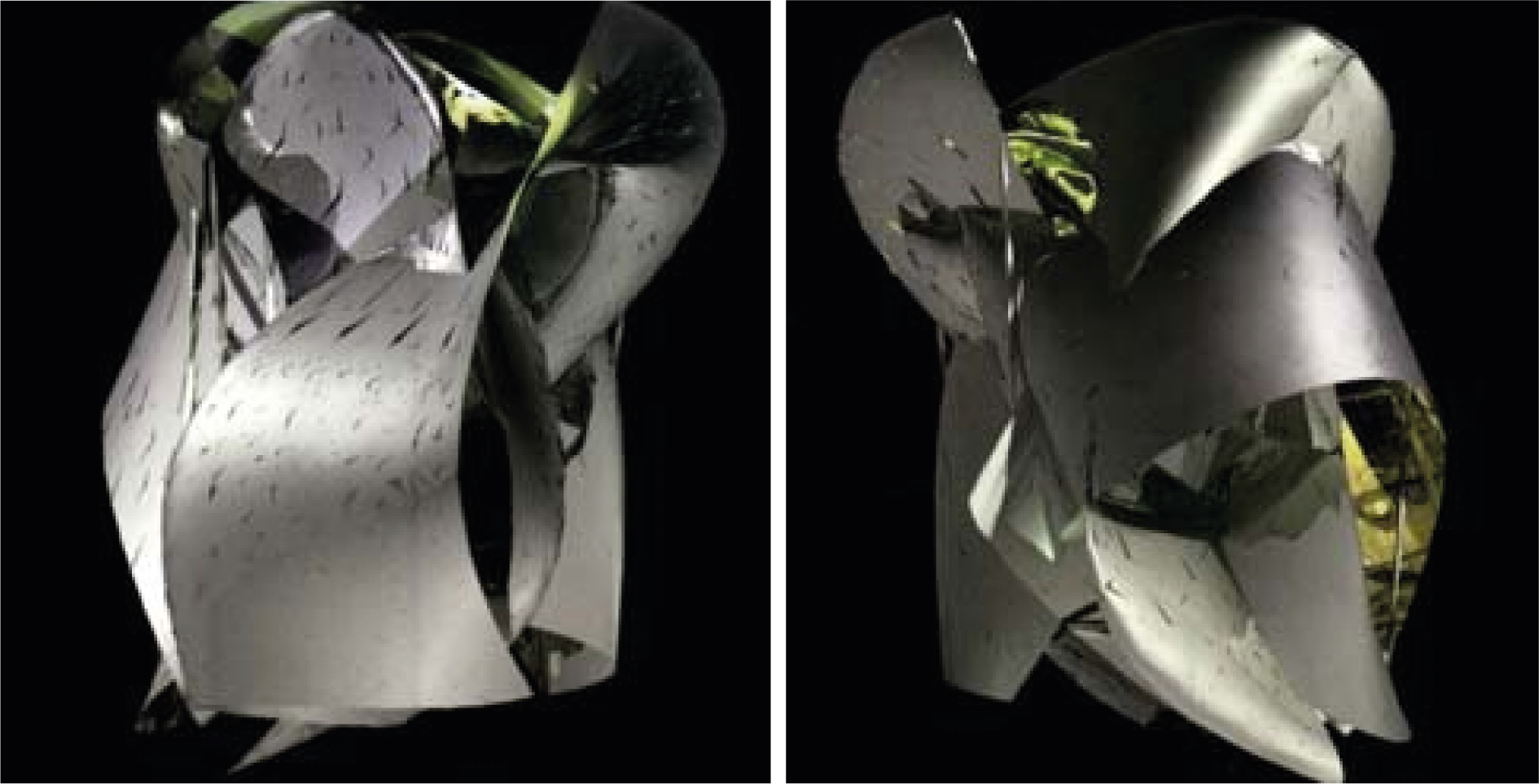Computational design
A case study
DOI:
https://doi.org/10.18861/ania.2022.12.1.3216Keywords:
parametric design, Computational design, algorithmic design, generative design, new technologies, digital designAbstract
Throughout history, man has sought to perfect systems for creating and representing space ever more accurately. But it was not until the invention of computers and the development of digital systems that a Copernican turning point in design truly took place, a revolution that replaced traditional design processes based on manual drawing. In less than thirty years, a new generation of digital procedures went from representing space (digital design) to being used as a tool to enhance the designers' design capabilities (computational design).
Based on these assumptions, the aim of this work is to analyse and classify three emblematic projects from the end of the 20th century, three projects that, although not built, marked a milestone in the history of recent architecture.
For their analysis, we will take as a reference the taxonomy elaborated by Inês Caetano, Luís Santos and António Leitão, in their article Computational design in architecture: Defining parametric, generative, and algorithmic design (2020). In this article, the authors identify that contemporary scientific literature related to computational design is associated with three terms: parametric design, algorithmic design, and generative design. For this reason, we will use these terms as central axes for our classification and analysis.
Downloads
References
Armour, G, Buffa, E. (1963). A Heuristic Algorithm and Simulation Approach to Relative Location of Facilities. Science 9 (2). January, 294-309.
Bernal, M.; Haymaker, J.; Eastman, C. (2015). On the role of computational support for designers in action. Design Studies. Volume 41, Part B, November 163-182.
Caetano, I.; Santos, L.; & Leitão, A. (2020). Computational design in architecture: Defining parametric, generative, and algorithmic design. Frontiers of Architectural Research, 9(2), January, 287-300.
Chaszar, A., & Joyce, S. C. (2016). Generating freedom: Questions of flexibility in digital design and architectural computation. International Journal of Architectural Computing, 14(2), 167–181.
Cosme Muñoz, A. (2008). El proyecto de arquitectura: concepto, proceso y representación. Estudios universitarios de arquitectura. Barcelona: Editorial Reverté.
Cruz, D. (2013). Tecnologías aplicadas. Santiago de Chile: Escuela de Artes Visuales Universidad.
Eggert, R. (2004). Engineering design. Pearson/Prentice Hall.
Eisenman, P. (1987). Biocenter. Eisenman Architects. https://eisenmanarchitects.com/Biocenter-1987
Elghandour, A.; Saleh, A.; Aboeineen, O.; Elmokadem, A. (2014). Using Parametric Design to Optimize Building's Façade Skin to Improve Indoor Daylighting Performance. 353-361
Frazer, J.; Frazer, J.; Xiyu, L.; Mingxi, T.; Janssen, P. (2002). Generative and evolutionary techniques for building envelope design. Proceedings of the 5th International Conference on Generative Art. Milan, Italy, 1-16.
Iwamoto, Lisa. (2009). Digital Fabrications. Architectural and material techniques. New York: Princenton Architectural Press.
Jabi, W. (2013). Parametric design for architecture. Hachette UK.
Jencks, C. (2004). El nuevo paradigma en la arquitectura contemporánea. Valencia: Ediciones Generales de la Construcción.
Kalay, Y. (1989). Modeling Objects and Environments Principles of Computer Aided Design. New York: Wiley.
Krause, J. (2003). Reflections: the creative process of generative design in architecture. Proceedings of the 6th International Conference on Generative Art.
Kolarevic, B. (2003). Architecture in the Digital Age: Design and Manufacturing. New York: Branko Kolarevic edic.
Lynn, G. (2013). Archaeology of the Digital. Montreal: Canadian Centre for Architecture.
Moneo, R. (2004). Inquietud teórica y estrategia proyectual en la obra de ocho arquitectos contemporáneos. Barcelona: Actar.
Montagu, A.; Mariño, M.; Igarzabal De Nistal, M. (1993). El aporte de la informática en la arquitectura, el diseño y el urbanismo. Buenos Aires: Dir. Investigación, Sec. De Inv. y Post. FADU. UBA.
Novak, M. (1991). Liquid Architecture in Cyberspace. Cyberspace: First Steps. Benedikt, Michael. Cambridge, MA: The MIT Press.
Oxman, N. (2013). Water-base Digital Fabrication Platform” [online]. Projects. Massachusetts. EE. UU: Massachusetts Institute of Technology.
Pimentel, D. (2004). Superconectados. Cultura Digital: comunicación y sociedad. Arturo Montagu. Buenos Aires: Paidos.
Serraino, P. (2002). History of Form *Z. Basel: Birkhäuser.
Szalapaj, P. (2001). CAD principles for architectural design. Routledge.
Terzidis, K. (2003). Expressive form: A conceptual approach to computational design. Routledge.
Van der Zee, A., & De Vries, B. (2008, December). Design by computation. In GENERATIVE ART CONFERENCE (11, 35-37).
Yessios, C. (1987). A Fractal Studio. Integrating Computers into the Architectural Curriculum. ACADIA Conference Proceedings. North Carolina: Raleigh, 169-182.
Zarei, Y. (2012). The challenges of parametric design in architecture today: Mapping the design practice (Doctoral dissertation, The University of Manchester (United Kingdom)).

Downloads
Published
How to Cite
Issue
Section
License
Copyright (c) 2021 Marcelo Fraile Narvaez

This work is licensed under a Creative Commons Attribution 4.0 International License.
The journal and its contents are licensed under the Creative Commons - Attribution 4.0 International License (CC BY 4.0). It is possible to copy, communicate and publicly distribute its content as long as the individual authors and the name of this publication are cited, as well as the publishing institution (Universidad ORT Uruguay).

